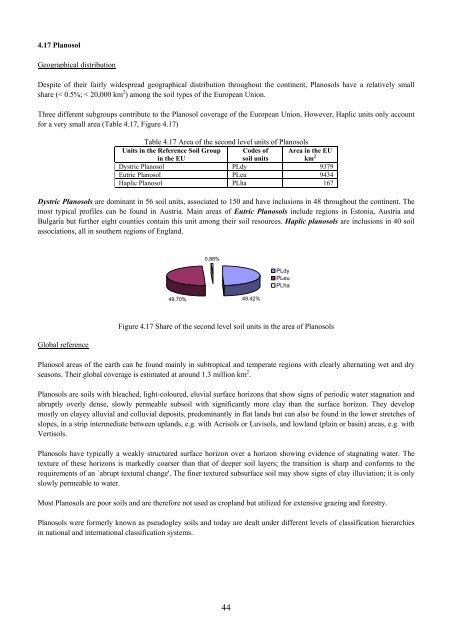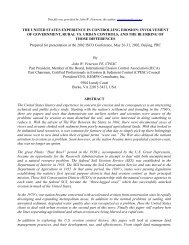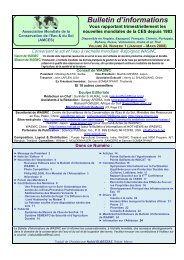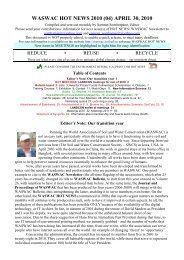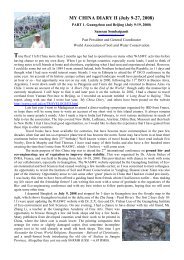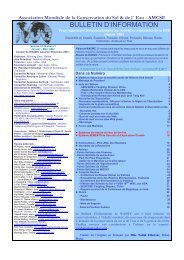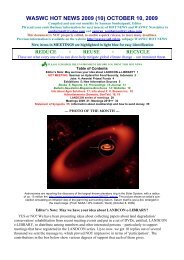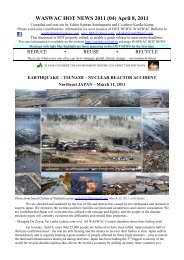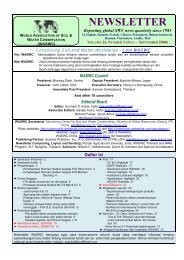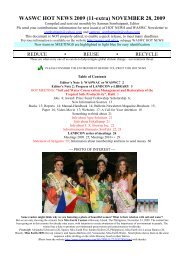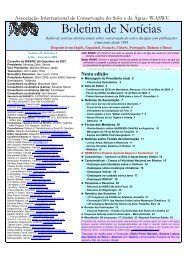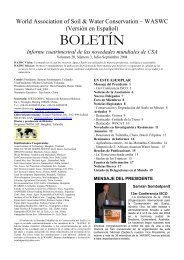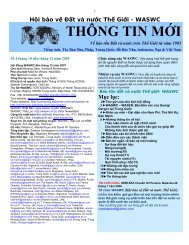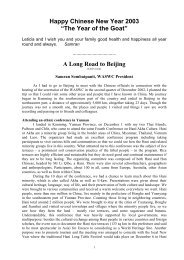Soils of the European Union - European Soil Portal - Europa
Soils of the European Union - European Soil Portal - Europa
Soils of the European Union - European Soil Portal - Europa
Create successful ePaper yourself
Turn your PDF publications into a flip-book with our unique Google optimized e-Paper software.
4.17 PlanosolGeographical distributionDespite <strong>of</strong> <strong>the</strong>ir fairly widespread geographical distribution throughout <strong>the</strong> continent, Planosols have a relatively smallshare (< 0.5%; < 20,000 km 2 ) among <strong>the</strong> soil types <strong>of</strong> <strong>the</strong> <strong>European</strong> <strong>Union</strong>.Three different subgroups contribute to <strong>the</strong> Planosol coverage <strong>of</strong> <strong>the</strong> <strong>European</strong> <strong>Union</strong>. However, Haplic units only accountfor a very small area (Table 4.17, Figure 4.17)Table 4.17 Area <strong>of</strong> <strong>the</strong> second level units <strong>of</strong> PlanosolsUnits in <strong>the</strong> Reference <strong>Soil</strong> Groupin <strong>the</strong> EUCodes <strong>of</strong>soil unitsArea in <strong>the</strong> EUkm 2Dystric Planosol PLdy 9379Eutric Planosol PLeu 9434Haplic Planosol PLha 167Dystric Planosols are dominant in 56 soil units, associated to 150 and have inclusions in 48 throughout <strong>the</strong> continent. Themost typical pr<strong>of</strong>iles can be found in Austria. Main areas <strong>of</strong> Eutric Planosols include regions in Estonia, Austria andBulgaria but fur<strong>the</strong>r eight counties contain this unit among <strong>the</strong>ir soil resources. Haplic planosols are inclusions in 40 soilassociations, all in sou<strong>the</strong>rn regions <strong>of</strong> England.0.88%49.70% 49.42%PLdyPLeuPLhaGlobal referenceFigure 4.17 Share <strong>of</strong> <strong>the</strong> second level soil units in <strong>the</strong> area <strong>of</strong> PlanosolsPlanosol areas <strong>of</strong> <strong>the</strong> earth can be found mainly in subtropical and temperate regions with clearly alternating wet and dryseasons. Their global coverage is estimated at around 1.3 million km 2 .Planosols are soils with bleached, light-coloured, eluvial surface horizons that show signs <strong>of</strong> periodic water stagnation andabruptly overly dense, slowly permeable subsoil with significantly more clay than <strong>the</strong> surface horizon. They developmostly on clayey alluvial and colluvial deposits, predominantly in flat lands but can also be found in <strong>the</strong> lower stretches <strong>of</strong>slopes, in a strip intermediate between uplands, e.g. with Acrisols or Luvisols, and lowland (plain or basin) areas, e.g. withVertisols.Planosols have typically a weakly structured surface horizon over a horizon showing evidence <strong>of</strong> stagnating water. Thetexture <strong>of</strong> <strong>the</strong>se horizons is markedly coarser than that <strong>of</strong> deeper soil layers; <strong>the</strong> transition is sharp and conforms to <strong>the</strong>requirements <strong>of</strong> an `abrupt textural change'. The finer textured subsurface soil may show signs <strong>of</strong> clay illuviation; it is onlyslowly permeable to water.Most Planosols are poor soils and are <strong>the</strong>refore not used as cropland but utilized for extensive grazing and forestry.Planosols were formerly known as pseudogley soils and today are dealt under different levels <strong>of</strong> classification hierarchiesin national and international classification systems.44


